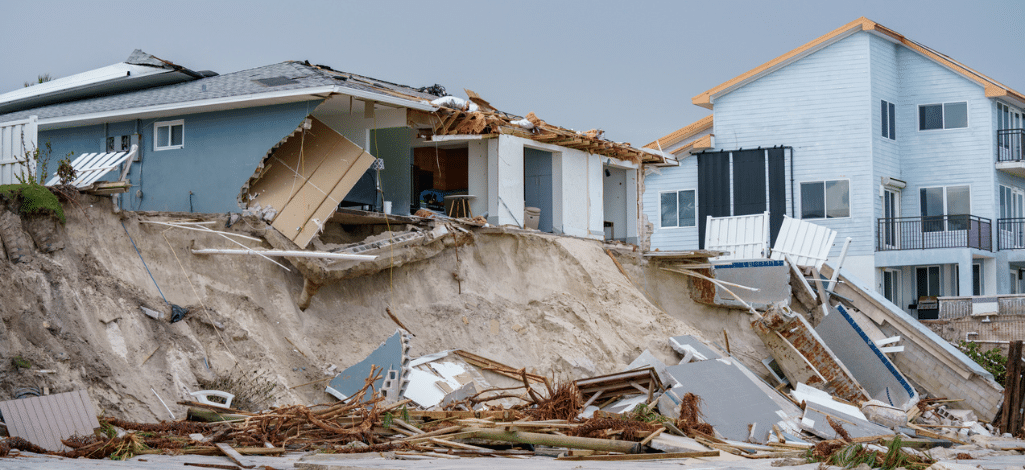The general rule is that an insurer’s duty to defend is decided solely on the allegations in the pleadings without resorting to “extrinsic evidence”. One of the exceptions to this rule is evidence that is explicitly referred to within the pleadings.
In Monenco Ltd. v. Commonwealth Insurance Co., 2001 SCC 49, the Supreme Court of Canada held that such evidence may be considered but only to determine the substance and true nature of the allegations in the pleadings. Extrinsic evidence should not be considered if it would require findings to be made before trial that would affect the underlying litigation.
In construction defect claims, it is not uncommon for the plaintiff to reference specific expert reports in their pleadings. Can an insurer rely on facts in an expert report referenced in the pleadings to deny a defence?
This issue was considered recently by the Ontario Court of Appeal in AIG Insurance Company of Canada v. Lloyd’s Underwriters, 2022 ONCA 699.
Background
The plaintiffs in the underlying action (the “Forgets”) purchased vacant land from the City of Timmins (the “City”) in 2012. In 2013, the Forgets obtained a building permit from the City to construct a new residence on the land. The Forgets built a home and moved into it in December 2013.
Starting in 2016, the slope on the property adjoining the Forgets’ home began to fail, after which ongoing erosion impacted the stability of the Forgets’ property. The Forgets brought a claim against the City for property damage occurring between April 2016 and December 2019, alleging negligence, nuisance and trespass to land against the City.
Lloyd’s Underwriters (“Lloyd’s”) and AIG Insurance Company of Canada (“AIG”) provided general liability insurance to the City during the years in which the alleged property damage occurred. AIG covered the City for 2016 to 2017. Lloyd’s covered the City for 2018 and 2019. AIG agreed to defend the City under a reservation of rights. However, Lloyd’s denied a defence.
Lloyd’s denied coverage to the City on two grounds, both of which relied on a geotechnical report referenced in the pleadings (the “AMEC Report”) which was delivered to the City in May 2017. The City commissioned the AMEC Report “to complete a preliminary assessment of the conditions of the slope” of the adjoining property. The AMEC Report offered potential remedial actions and recommendations to mitigate further damage to the adjoining property. Although the report focused on the adjoining property, reference was also made to the Forgets’ property.
Lloyd’s policy applied to “property damage” only if the “property damage” was caused by an “occurrence” (i.e., an accident).
Lloyd’s argued that any property damage caused by the drainage and erosion problems had manifested by May 2017 when the AMEC Report was delivered to the City (and therefore before Lloyd’s came on risk in 2018). Lloyd’s contended that the AMEC Report gave the City knowledge of how to remedy the cause of the damage. Accordingly, the City’s failure to proceed with the recommended remediation meant that any ongoing “property damage” to the Forgets’ property after May 2017 was no longer caused by an “occurrence” and therefore did not trigger the policy’s insuring agreement.
Alternatively, Lloyd’s argued coverage was removed for similar reasons by the policy’s exclusion for “property damage” expected or intended from the standpoint of the “insured”. The argument was that, after the City’s receipt of the AMEC Report, any further property damage to the Forgets’ property was expected from the standpoint of the City and therefore excluded.
Application Decision
The application judge did not accept that the AMEC Report was evidence of a crystallizing event that either terminated the “occurrence” of property damage as of May 2017 or meant the City expected the property damage which occurred thereafter. The application judge noted the report was preliminary and contained many qualifications, making it “somewhat equivocal”. The application judge found that the factual allegations in the pleadings raised the possibility the claims fell within coverage. Accordingly, Lloyd’s had a duty to defend.
Court of Appeal Decision
On appeal, Lloyd’s argued the application judge erred in the treatment of the AMEC Report by (i) failing to apply the traditional “pleadings rule” in the duty to defend analysis, which requires that allegations in the statement of claim be accepted as true and (ii) misapplying the law on admissibility of extrinsic evidence referenced in the pleadings by importing an additional requirement that such evidence must not be “controversial”.
The Court of Appeal dismissed the appeal and upheld the application judge’s finding.
The Court held that simply because the AMEC Report was referred to in the pleadings did not make it part of the pleadings. Accordingly, the traditional pleadings rule did not apply to the report, which meant the facts in the report were not to be assumed as true. Rather, based on Monenco, the AMEC Report was extrinsic evidence. As extrinsic evidence, the application judge was entitled to consider the AMEC Report for the purpose of determining the substance and true nature of the allegations. However, Monenco precludes courts from considering “premature evidence”, which is evidence that would require findings to be made before trial that would affect the underlying litigation.
The Court of Appeal found the AMEC Report was precisely that type of “premature” evidence”. The pleadings alleged property damage caused by an occurrence during Lloyd’s policy period. Further, the pleadings did not allege intentional conduct on the part of the City that would suggest the property damage was expected or intended during the time Lloyd’s was on risk. To the extent the AMEC Report had relevant evidence on these coverage issues, the application judge was correct not to rely on such evidence because it would require findings to be made before trial that would affect the underlying litigation.
Takeaways
There are two important takeaways from AIG v. Lloyd’s.
First, simply because evidence is referenced in pleadings does not mean the evidence becomes part of the pleadings for the purposes of the duty to defend analysis.
Second, while extrinsic evidence can be considered to determine the substance and true nature of the allegations, AIG v. Lloyd’s confirms the principle from Monenco that such evidence cannot be considered if doing so would require findings of fact that affect the underlying litigation.
It will be interesting to see whether AIG v. Lloyd’s has implications for how extrinsic evidence is used in duty to defend cases involving additional insureds. Often in these cases the parties will rely on provisions of the service contracts between the additional insured and named insured in arguing whether the claim against the additional insured “arises out of” the named insured’s operations. However, the scope of a named insured’s services may be a contentious issue in the underlying litigation, particularly if the contract divides responsibility between the parties, or if there are disagreements over the meaning of certain provisions in the contract. AIG v. Lloyd’s suggests that a Court hearing such disputes should be cautious not to make any findings of fact that could affect the underlying case.
For more information, or if you have a question about this article, please contact a member of our Coverage Disputes Group.



